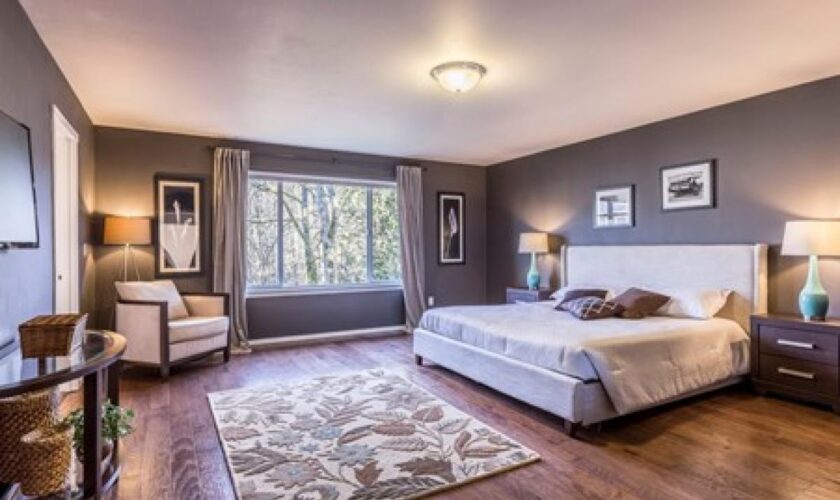Choosing the right bedroom colour can get overwhelming. Your bedroom is your haven, a place you unwind and retire after a tiring day. It’s one of the most intimate areas of your home. Hence, you must choose your bedroom colour carefully. You must choose a colour that will help you sleep well at night and will inspire you to kickstart your morning on a positive note.
Confused about which colour to use for your bedroom or which painting service to hire? Why limit yourself to just a single hue when you can use a two-tone colour combination for your bedroom? We have rounded up 5 unique two-tone colour combinations that will enhance your bedroom walls.
Pastel Blue & White
Pastel blue is a perfect colour to pick for your bedroom if you want your bedroom to exude a serene and grounded vibe. Pastel blue and white complement each other and make a space look light and energetic. People who are looking for a colour combination that will instantly soothe a person and make them feel relaxed must give this combination a serious thought. When it comes to furniture and linens, go for white, beige, creams, browns and greys as they will help to maintain the calm feel of the room.
Terracotta & Cream
If you are someone who always finds yourself gravitating towards earthy tones, then this colour combination is for you. Terracotta is gaining popularity amongst paint contractors and homeowners in 2022 and we are here for it. The colour instantly makes a space feel cosy and warm. Cream on the other hand is a classic neutral hue, which perfectly contrasts terracotta and compliments it. People who have French countryside, Mid-century themed, vintage, rustic or cabin-styled houses must try this colour combination. This two colour combination for bedroom is great for people who want to paint their bedroom walls in a bold colour scheme yet don’t want to leave the comfort of the warm neutral colours.
Lilac & White
Who says that lilac is a feminine colour and cannot be used in your bedroom? One of the quickest ways to make your bedroom appear royal, opulent and elegant is to introduce lilac and white into your bedroom. Lilac instantly makes your bedroom appear light, airy and stylish. This colour combination is refreshing and will undoubtedly make your guests drool. If you are sceptical of using lilac in a large proportion, then tell your paint contractor to paint the wall behind your bed in lilac and turn that into an accent wall, while keeping the rest of the walls white. A pro tip is to introduce a chandelier and metallic décor elements into your lilac bedroom to further elevate its overall aesthetics.
Dusty Rose & Green
If you feel that a dusty rose and green bedroom only looks appealing in an interior magazine, then we are here to tell you otherwise. Dusty rose and green go perfectly with each other and are great colour choices for your bedroom. This two colour combination for bedroom will instantly make your bedroom appear intimate, elegant and chic. A pro tip is to keep the rest of the décor minimal as you would want your walls to be the highlight of your bedroom. Some common hues that you can use in a dusty rose and green bedroom are gold, blush pink, teal, grey, white, cream and beige.
Which two-tone colour combination best reflects you? Looking to hire a credible painting service? Why not let the experts at Asian Paints help you create your dream home? Choose Asian Paints Safe Painting Service and let them help you with everything from picking the colour scheme, planning, execution, and post-clean-up service.


